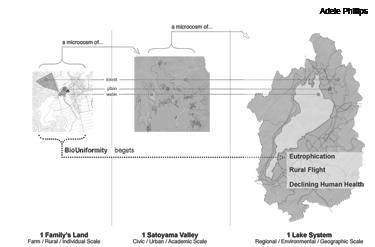
| 3.11 Initiative | MIT SA&P | Keio SFC | MIT Japan Program | Tané Community Blog | Veneto Experience | Kobayashi Lab Blog | back to intro | |||||||||||||
|
|
|
|
|
|
|
|
|
||||||
 | |||||||||||||
|
Since 2006, the MIT Japan Design Workshop under the direction of MIT’s Shun Kanda and the Kobayashi Laboratory of Keio University with the people of Tané, have been conducting joint sessions on a project dealing with a crisis of a different urgency, one Kanda refers to as a “slow disaster” in the making. As is true with hundreds of other rural settlements across Japan, Tané is facing a systemic erosion of its very existence. Despite its centuries-old village settlement, endemic population depletion accompanied by unmanaged forest, water, and field resources forecasts an imminent and unfortunate demise. “To Live in Tané” underscores the MIT & Keio University’s initiative at developing models for alternative futures guided by improved management of the surrounding ecology, a revived resident population and the introduction of an educational center for environmental design. |
 |
||||||||||
|
Tané no Neta |
|||||||||||
 |
|||||||||||
|
Satoyama: Japan's Historic Community Model as Modern Inspiration |
|||||||||||
© 2011 Tané Initiative. MIT School of Architecture and Planning. Site design by Ira. | |||||||||||